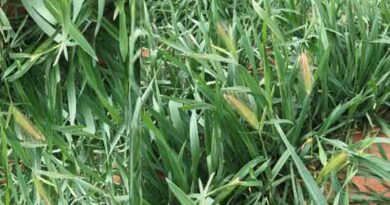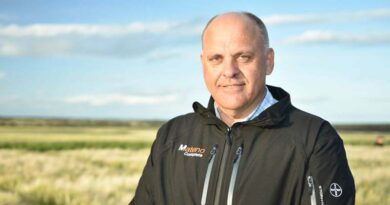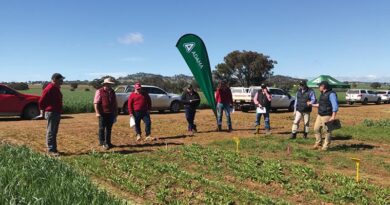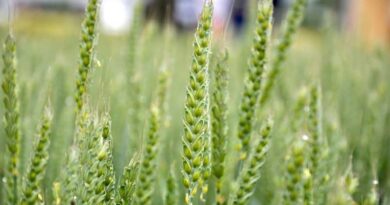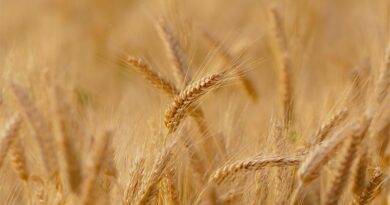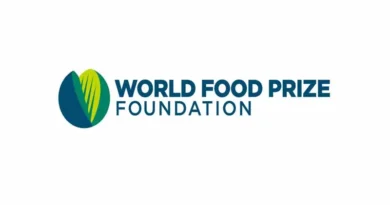Unified approach improves herbicide resistance data
07 November 2021, AU: For the first time, the different organisations across Australia tasked with surveying weeds for herbicide resistance have adopted the same protocols and methods for undertaking this critical work for the grains sector.
https://www.en.krishakjagat.org/crop-protection/tendovo-soybean-herbicide-from-syngenta-earns-rave-reviews-during-first-season-of-use/
This uniform approach will help take herbicide resistance understanding to a new level.
Herbicide resistance surveys have been conducted across the Australian grain cropping region for a number of years. Initial surveys were undertaken in the early 1990s in South Australia, Western Australia, New South Wales and Victoria to assess the extent of resistance in annual ryegrass.
However, it was not until 2016 that most of the Australian cropping region had been surveyed at least once.
Now through Grains Research Development Corporation (GRDC) investment, the latest survey has gone to a new level by standardising much of the sampling, testing and reporting methodology. Individual weed species are even being screened for resistance at a single location, and not across locations as previously done.
Previously, each organisation involved in this survey work used different methods for sample collection, preparation, chemical application, assessment and reporting. In some regions only parts of the state were surveyed each year and in others the whole survey was conducted in a single year.
The current survey led by Charles Sturt University with partners University of Adelaide, University of Western Australia, University of Sydney and Queensland Department of Agriculture and Fisheries, conducted the sampling across the entire cropping region in 2020, except for central Queensland where harvest had already been completed.
A subsequent survey of central Queensland was undertaken in winter 2021 and summer weeds were targeted over northern NSW and Queensland during the 2020-21 summer cropping season.
More than 2700 paddocks across the country were surveyed as part of this work.
Project leader and Charles Sturt University senior technical officer Dr John Broster said random surveys across the cropping regions provided critical information on weed species, their abundance and their resistance status to key herbicides.
“This informs future research needs as well as enables immediate extension messages to be better targeted for each region,” Dr Broster said.
“Annual ryegrass, wild oats, brome grass, barley grass, Indian hedge mustard, sow thistle, wild radish, doublegee (three corner jack) and capeweed were the winter growing weeds collected. Feathertop Rhodes grass, anwless barnyard grass, sweet summer grass were collected during the summer survey, and winter and summer growing sow thistle and fleabane were targeted across both surveys.”
Dr Peter Boutsalis and researchers from the University of Adelaide have just completed testing all the annual ryegrass from across Australia for resistance to pre-emergent herbicides. These were grown in pots and sprayed with herbicides at label rates in autumn and winter 2021.
“Having all ryegrass samples from across the country at the one location for the first time was a really powerful opportunity,” Dr Boutsalis said.
“While overall resistance to pre-emergent herbicides is still fairly low, there are still plenty of individual populations where problems exist.”
Resistance to the newer pre-emergent herbicides remains very low at a national level.
Dr Boutsalis said identifying and keeping herbicide-resistant weeds at manageable levels was essential for the long-term viability of herbicides in Australian cropping systems.
This harvest is an opportune time for grain growers to collect weed seeds for their own herbicide resistance testing.
Determining the status of herbicide resistance provides growers with valuable information on the effectiveness of herbicides on target weeds, potentially preventing the wasteful use of ineffective herbicides and reducing the spread of herbicide resistance.
Results from testing will help inform growers’ integrated weed management strategies ahead of the 2022 cropping season and beyond.
Collection of samples of weed seeds (for testing levels of resistance) can occur during and even after harvest or cutting crops for fodder. After harvest, weed seed heads are still present in paddocks.
Weed seeds collected at harvest time can be sent for testing over summer and reporting in early autumn.


